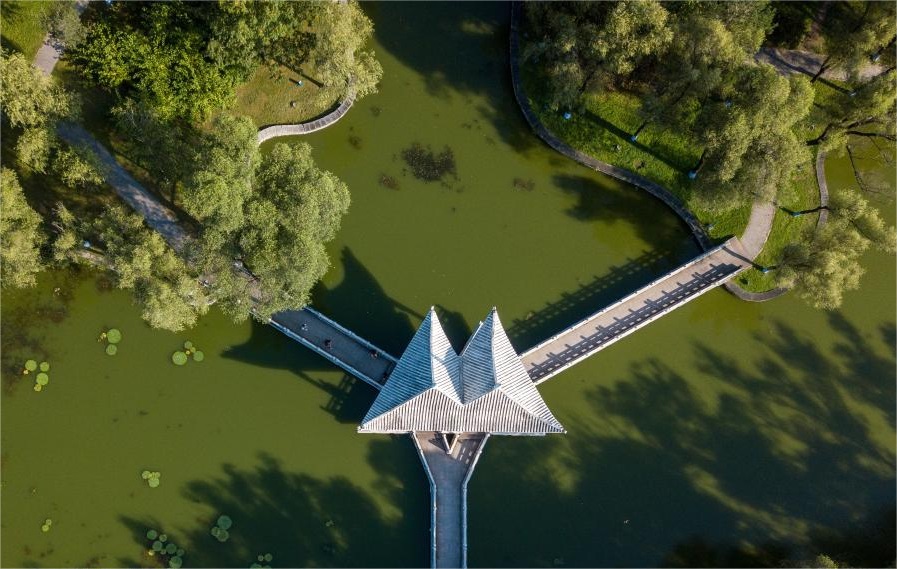Feature: China, Mauritius work together for underwater reforestation
PORT LOUIS, Aug. 24 (Xinhua) -- Off the east coast of Mauritius in the Indian Ocean, not far from Pointe aux Feuilles, stand a number of coral nurseries.
Coral fragments collected from various places are cultivated here, and grown-up corals will then be transplanted to a degraded area of reef ecosystem, thus realizing reforestation under the sea.
As part of a project jointly undertaken by the Chinese tech giant Huawei and the Mauritius non-governmental environmental protection group EcoMode Society, "25,000 coral fragments were successfully raised in nurseries and planted over an area of 1.01 square km," said Sudheer Maudhoo, Mauritian minister of blue economy, marine resources, fisheries and shipping.
Mauritius has more than 150 km of its coastline surrounded by coral reefs. Coral reefs play a crucial role in the Earth's ecology. Dubbed rainforest of the sea, they serve as vital habitats for a multitude of marine animals and plants.
Maudhoo noted that coral reefs play an important economic and social role, as they not only attract tourists and provide jobs and a source of income for locals, but also serve as a natural barrier to protect the coastal areas from tropical storms. However, in the past few decades, the reef ecosystem faces many threats, including climate change, overfishing and pollution.
As an assistant professor with the Agriculture Faculty of the University of Mauritius, Nadeem Nazurally has long been involved in marine protection and coral conservation. He recalled that coral cultivation process used to be "lengthy and cumbersome."
"Once we leave the site," he said, "we don't really have any vision or knowledge of what's happening under water."
And annoying "setbacks" can not be avoided. For example, the crown-of-thorns starfish, known as a "killer" of coral reefs, could eat up to four square meters of coral seedlings in a single night, only to be discovered the next day when it was too late, said Nadeem, also president of EcoMode Society.
The birth of the technology-supported project for coral reef restoration changed the scenario.
"With Chinese technology, we can monitor from our office, even at night, and we can intervene in time," Nadeem said.
Li Jiyu, a technical engineer of Huawei Mauritius, said that to monitor the mobility of species at the coral reef restoration site and determine the factors that disturb reproductive success, his company deployed a solution comprising underwater cameras, GPS receivers, 5G technologies, and data cloud.
"With the support of Huawei, we have been able to scale up," said Nadeem.
The project has entered its second phase now. Technologies such as AI-based data analysis would be used to guide the conservation decisions, support the research of marine biologists, and educate the public on the importance of reef conservation and restoration.
Nadeem added that those valuable data collected through Chinese technologies are shared with researchers of the University of Mauritius to help understand the process of coral bleaching, the interaction patterns between corals and other marine organisms, and many more.
"The project is a perfect example on how to merge technologies and active restoration of ecosystem," the marine scientist said. "There is big potential for collaboration with China."
Photos
Related Stories
Copyright © 2024 People's Daily Online. All Rights Reserved.









